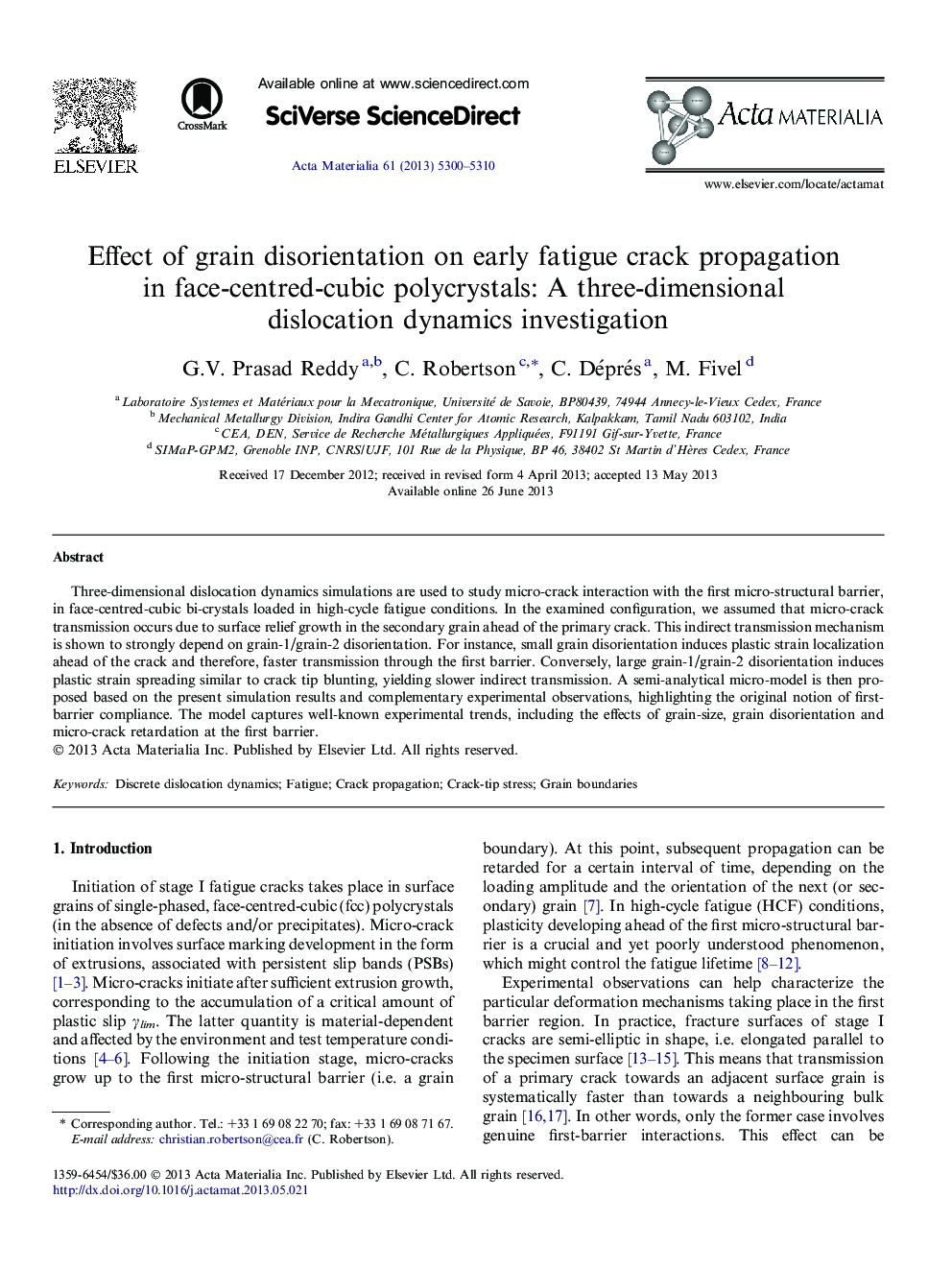| Article ID | Journal | Published Year | Pages | File Type |
|---|---|---|---|---|
| 1445820 | Acta Materialia | 2013 | 11 Pages |
Three-dimensional dislocation dynamics simulations are used to study micro-crack interaction with the first micro-structural barrier, in face-centred-cubic bi-crystals loaded in high-cycle fatigue conditions. In the examined configuration, we assumed that micro-crack transmission occurs due to surface relief growth in the secondary grain ahead of the primary crack. This indirect transmission mechanism is shown to strongly depend on grain-1/grain-2 disorientation. For instance, small grain disorientation induces plastic strain localization ahead of the crack and therefore, faster transmission through the first barrier. Conversely, large grain-1/grain-2 disorientation induces plastic strain spreading similar to crack tip blunting, yielding slower indirect transmission. A semi-analytical micro-model is then proposed based on the present simulation results and complementary experimental observations, highlighting the original notion of first-barrier compliance. The model captures well-known experimental trends, including the effects of grain-size, grain disorientation and micro-crack retardation at the first barrier.
